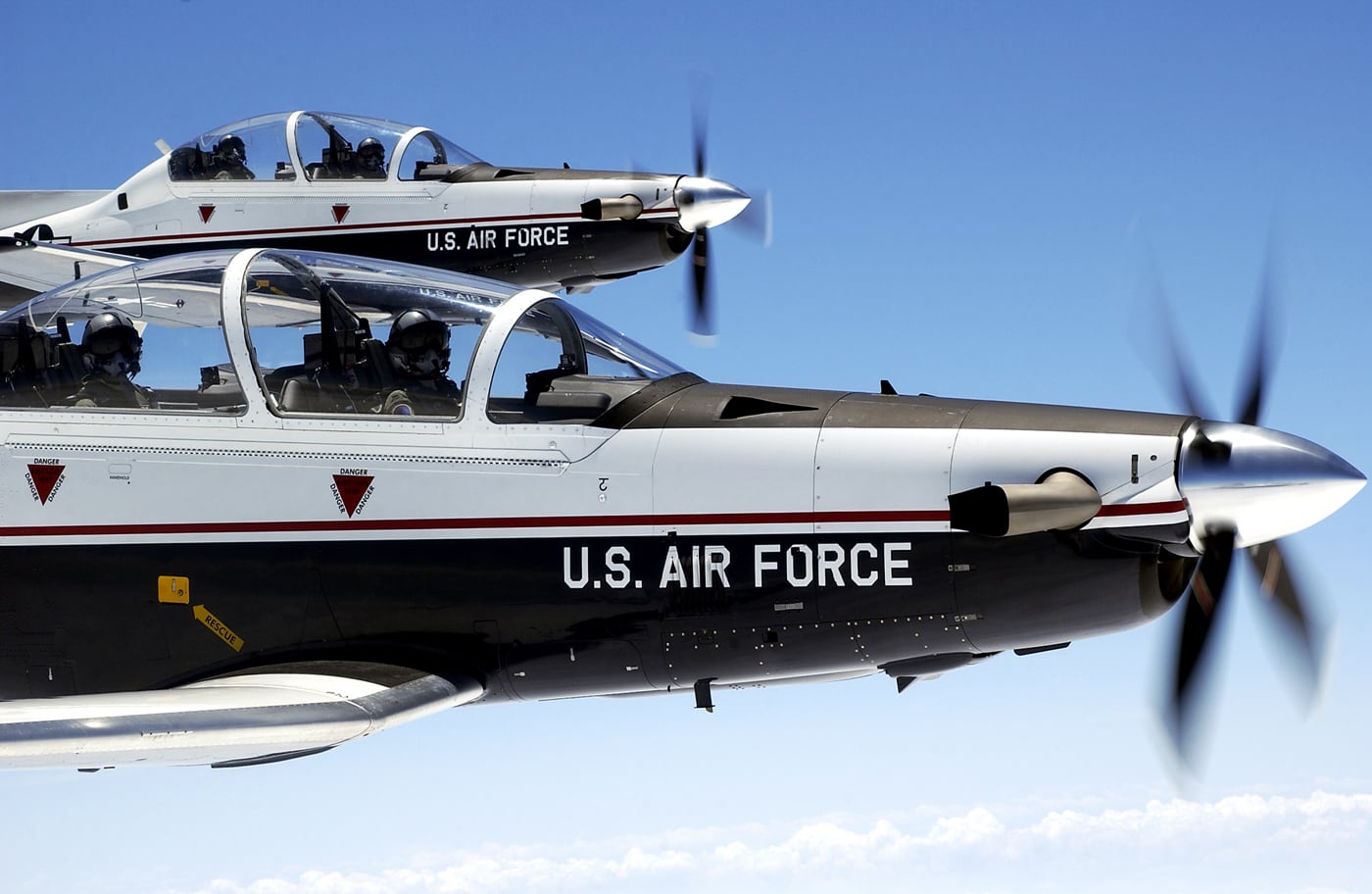The Air Force resumed flying its T-6 Texan II training aircraft Tuesday after a rash of hypoxia-like scares grounded them for nearly a month.
But while the Air Force is homing in on what led to the physiological problems, the final root cause has not yet been determined.
The 19th Air Force grounded its T-6 fleet Feb. 1 after 13 pilots at three bases experienced “unexplained physiological events” during the last week of January.
AETC said that the incidents were different from “classic hypoxia” ― a condition that occurs when someone has too little oxygen in their body, putting them at risk of becoming confused, faint or even passing out. But the release did not offer any more details about the events pilots experienced, and how they differed from hypoxia.
Maj. Gen. Patrick Doherty, commander of the 19th Air Force, ordered the grounding lifted after the Air Force ― along with experts from the Navy, NASA and medical specialties ― collected and analyzed data from pilots who experienced the problems and their aircraft. The Air Force also studied the Navy’s similar experiences with its T-45 Goshawk.
RELATED

“The operational pause was required to provide a robust and intrusive look at every component on every aircraft connected to or critical to the On-Board Oxygen Generating System,” or OBOGS, Doherty said in the release. “Our intent was to ensure aircrew awareness of UPEs, as well as newly-required aerospace physiology training, checklist procedures, and flight equipment modifications that ensure aircrew safety.”
AETC spokesman Master Sgt. Joshua Strang said there are no known flight restrictions at this time.
But the 19th will conduct new and recurring inspections of the OBOGS components to catch problems and, AETC hopes, reduce the number of hypoxia or hypoxia-like incidents in the future.
Instructor pilots will start flying again first to regain their currency, AETC said. Students will follow and resume flying by the end of the week. They will conduct warmup sorties to regain their currency before resuming the sorties required by the syllabus.

Doherty said that after gathering data from pilots, maintainers, engineers and flight surgeons, experts concluded that the symptoms suggested the integrity of the Texans’ OBOGS had been compromised, degrading its performance and leading to the physiological events.
In the release, Doherty said component failures or degredations affected the pressure, flow and content of the oxygen running through the OBOGS.
“Further investigation by engineers and flight surgeons is needed, but the speed at which professionals descended on this challenge to share their expertise and solutions was phenomenal,” Doherty said. “With 30 years of flying experience, looking at all of the facts and listening to our experts, these particular types of T-6 UPEs aren’t unexplained anymore in my mind. We have zeroed in on a handful of components that are degrading or failing to perform and needed to be replaced or repaired more often than the Air Force anticipated when they bought the aircraft.”
When asked to further describe the events pilots experienced, Strang said “each event is different and being looked into individually.”
“UPEs are, by their nature, unexplained, so, while one such symptom could be hypoxia, there are a litany of other possible circumstances that could meet the definition,” Strang said.
Stephen Losey is the air warfare reporter for Defense News. He previously covered leadership and personnel issues at Air Force Times, and the Pentagon, special operations and air warfare at Military.com. He has traveled to the Middle East to cover U.S. Air Force operations.




